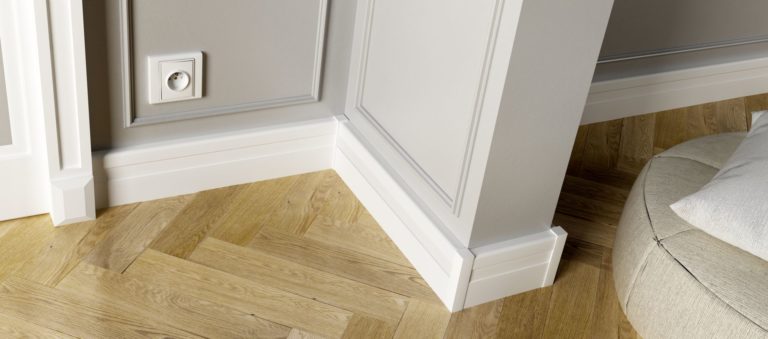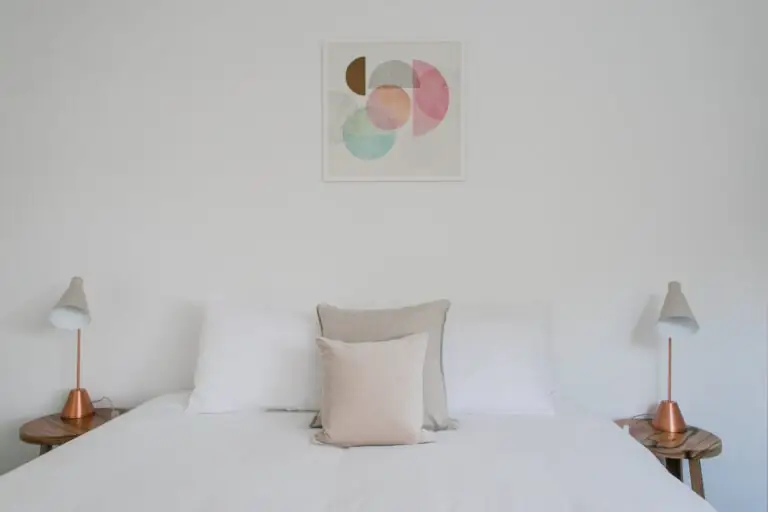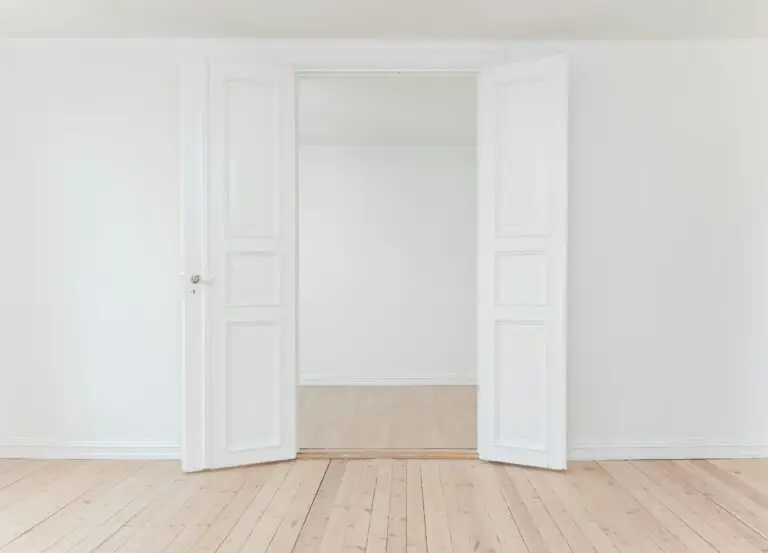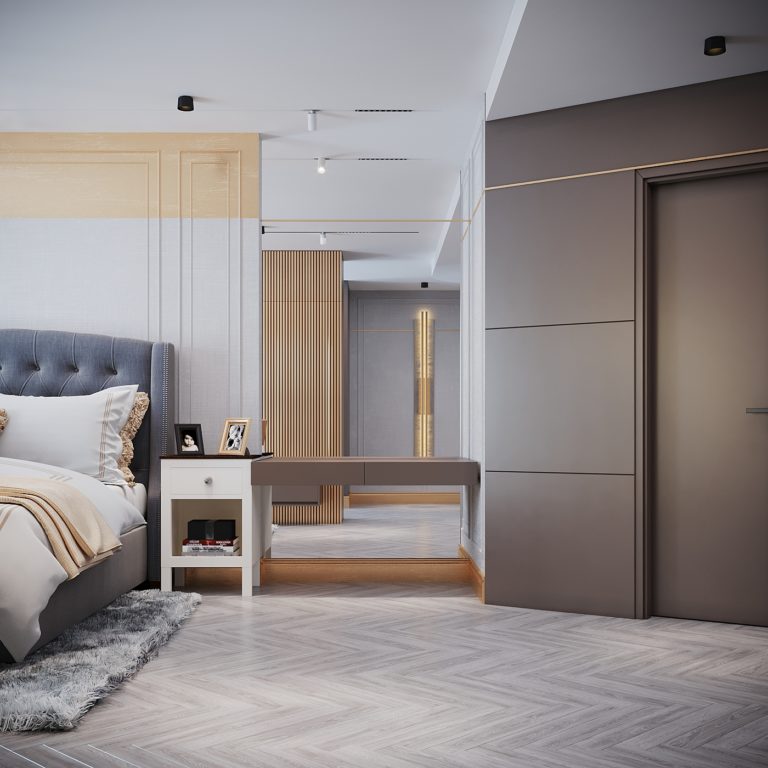How to choose the best skirting boards for your interior: relevant information and useful tips

Let’s make it clear from the start! A skirting board is a narrow and long piece of wood used to underline the border between the floor and the wall, going along the bottom of the latter. Do we actually need skirting boards in the interior? There is no doubt in this regard from the functional perspective. Initially being used to hide the uneven finishes on the wall, reaching the purpose of covering the wood flooring edges and serving as a good barrier for the vacuum cleaner, stopping it from scuffing the wallpaper or paint, now, skirting boards are mostly a decor element. Furthermore, they are not hard to install, while the variety of designs and the possibility to paint them stand behind their ability to elevate any interior. The question is: how do we choose the best skirting boards? There are a few aspects one should consider, and we would like to reveal them as follows.
Skirting board profile
Depending on the structure and design, there are various skirting board profiles that reveal unique shapes and features. We would like to make you acquainted with the top 10 profiles of this kind you can consider for your interior. One should note that the terms are rather technical, although they will be useful when you plan on purchasing skirting boards. Of course, we will provide you with a small description for each in part to make it easier.
Top 10 Skirting Board Types
- Lambs Tongue
This profile is a classic that brings elegance to almost any modern interior. The technique applied combines squared and rounded edges at a 45º angled chamfer, resulting in a vertical surface. Softening the sharp edges, this type of skirting board adds a touch of style and adapts the interior to contemporary design rules.
- Square Edge
This is the simplest solution of this kind and implies only a square angle at the top. Among its benefits are: easy to maintain, affordable, and adjustable to any style. This type sets sleek lines in the interior, keeping it simple, far from bringing an eye-catching effect, and offering a sleek contemporary air to the interior design.
- Ogee Skirting
First of all, associated with the traditional style, yet a promising source of luxury for modern interiors, the Ogee style is the most popular type of skirting used, particularly in the UK. What makes it stand out? Undoubtedly, the angled edge on the top that features a fall into a sweeping curve and an additional carved line below. You can also consider options with 2 sets of stylish waves for a more intricate design.
- Bullnose Skirting
No more and no less than a single rounded edge at the top defines this style. Again, the feature that makes it a popular option is simplicity. The lack of additional elements on the even surface makes it a reliable source of style for any interior. You don’t have to think much when buying it; it just really goes with everything. The rounded edge is safe if we speak about families with kids. Furthermore, when it comes to cleaning, you will not find an easier skirting type to take care of.
- Torus Skirting
The defining features of this style are a semi-circular arch on the top and a curve that slides below it. A tiny detail: the top squared part is slightly thinner than the rest of the board. This appealing design is usually integrated into period-style interiors, while the variety of materials and finishings makes it a leading choice.
- Chamfered and Rounded
Once again, a simple yet striking type of skirting featuring a rounded top and a sloping edge. The plain surface and soft shape make it another top choice for any interior. This is another type that works particularly for families with kids and takes little time to take care of.
- Square and Grooved
This go-to option is a real find for amateurs of modern design trends. The main feature is the groove carved into the board that creates a parallel horizontal line along the length of the board. The streamlined design is the first choice for ultra-modern interiors.
- Ovolo
The popular style of skirting features a curve with a less rounded shape without ending in a carved line but a nub in the board. Combining the best of the traditional and modern styles, it perfectly integrates into interiors of both directions. Here, we speak again about sleek lines that make it a top choice in contemporary interiors.
- Art Deco
The style inspired by the 1920s is a striking source of elegance for the interior. If you fancy a statement, this is your go-to type. The rectangular lines featuring a zig-zag shape are a great way to enrich the interior with the splash of luxury that has recently made a comeback.
- Victorian
One of the most sophisticated designs that started in the Victorian era, featuring intricate curves and patterns, is to be found in contemporary interiors due to the ability to take the interior design to the next level. The elaborate slopes dilute the overly simplified modern interiors.
Now you know a lot about each design and if you are in a hurry, you can already choose the type you want from Skirting World, but there are still some important factors to consider before buying.
Proportion
Consider the room size before purchasing the skirting, with lower boards for spaces with lower ceilings and the opposite. You should avoid tall skirting boards in rooms with low ceilings since horizontal lines always shorten the room. Generally speaking, the skirting board should be about 1/18 of the wall height.
Material
Skirting boards are not just about the way they look but also their quality. The material they are made of stands behind the durability of these pieces. We would like to present the main choices you can consider, revealing both sides of the coin for each type.
MDF (Medium-Density Fibreboard)
A combination of wood shavings, resin, wood chips, and sawdust compacted together, replicating a man-made material, ensuring its naturally smooth surface and being regarded as one of the safest on the market. Still, it proves to be less durable during the years, requiring replacement, particularly if it often interacts with wetness.
FJ Pine (Finger-Jointed Pine)
We speak about real timber here, which creates the skirting by pieces. Its durability goes beyond borders, while the natural look adds an irreplaceable stylish effect. In contrast with MDF, which is quite toxic during installation, this material does not present any risks of the kind. Furthermore, studies showed that natural wood improves the air quality. Although more expensive than the previous option, FJ Pine is more susceptible to scratches.
Hardwood
This is the go-to option for lovers of the traditional sense of style with raw timber elements. This material surely outlasts MDF and FJ Pine due to the fact that it is moisture resistant. It can be either lacquered or stained, showcasing the beautiful natural surface. The only drawback in this case is the price, which is pretty high.
Height
Of course, the skirting height choice is not based on hard rules. It depends mostly on the overall size of the room. The ceiling height is a good aspect to start with. Consider the following suggestions:
- Ceiling 2.4m – 90-135mm Skirting
- 2.7m – 115-185mm
- 3m – 135-230mm
- 3.6m – 185mm
Colour
If we speak about hardwood, its natural surface is a real find for interiors. In the case of materials that would benefit from a splash of colour, we suggest opting for the classic white or going with the latest skirting paint colours. Consider one of the following options:
Interior style
You should adapt the skirting boards to the overall style, considering the mentioned aspects. From the available options, you can either choose one that keeps pace with the particular style of your interior or an accent one to make a statement, specifically now, when eclectic combinations are welcome. Useful tip: regardless of the style, paint the boards in the classic white or any other neutral, and they will definitely work for any approach to interior design.



